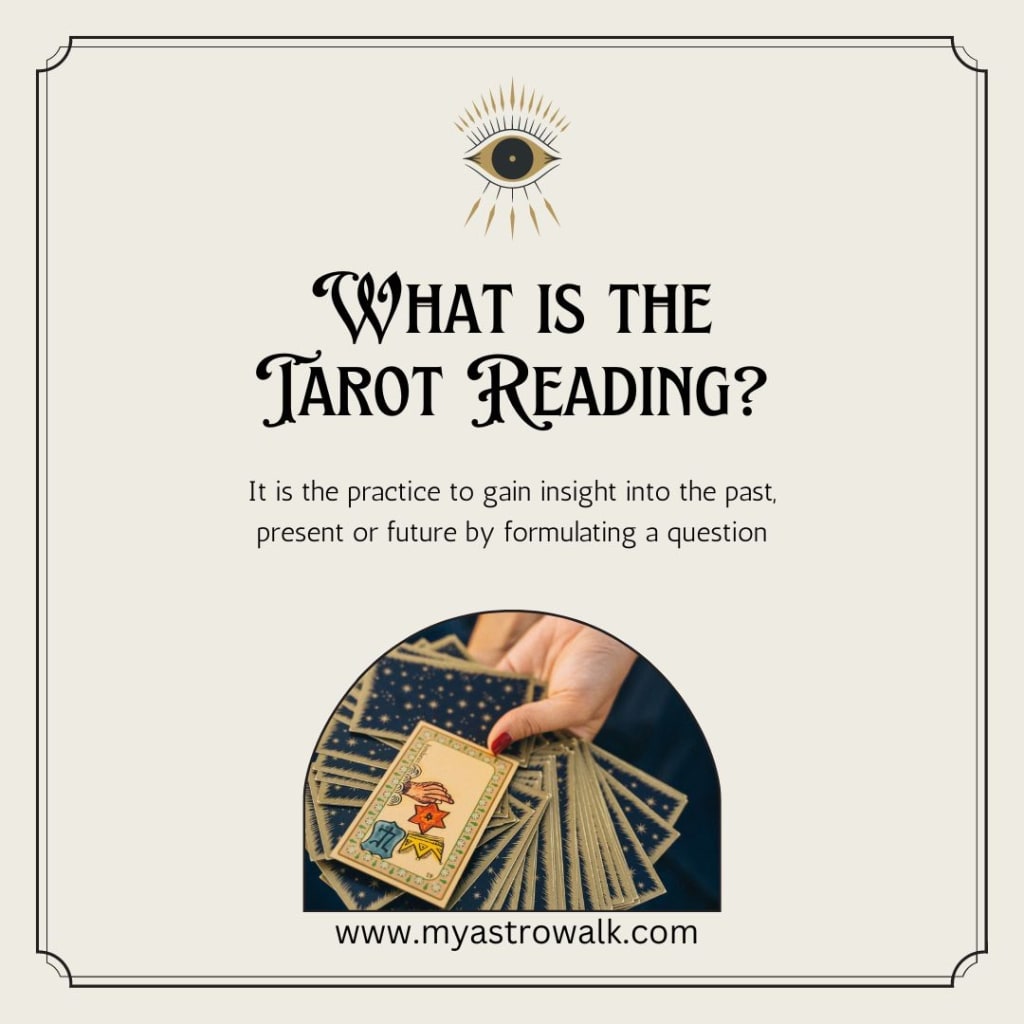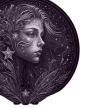
A tarot card is a card from a deck of 78 playing cards used in various parts of Europe to play card games and in fortune-telling, also known as cartomancy.
The deck is divided into two groups: the Major Arcana, which has 22 cards, and the Minor Arcana, which has 56 cards. The Major Arcana depicts archetypal figures and concepts, while the Minor Arcana is similar to a standard deck of playing cards, with four suits (cups, swords, wands, and pentacles) and numbered cards.
Tarot cards are used in a variety of ways, including for:
Fortune-telling: This is the most common use of tarot cards, and it involves using the cards to gain insight into the past, present, or future.
Self-reflection: Tarot cards can be used as a tool for self-reflection and exploration. By meditating on the images and symbols on the cards, you can gain insights into your own thoughts, feelings, and motivations.
Art: Tarot cards can be seen as beautiful and complex works of art. The symbolism and imagery on the cards can be appreciated for their aesthetic value alone.
Tarot card reading is a practice that uses tarot cards to gain insight into various aspects of life, like the past, present, or future. It's a form of cartomancy, which means using cards for divination or prophecy.
Here's a breakdown of the process:
Formulating a question: The person seeking guidance asks a specific question about a situation, relationship, or personal challenge.
Shuffling and drawing cards: The tarot reader, who interprets the cards, shuffles the deck while focusing on the question. Then, they draw a specific number of cards based on the chosen spread, a layout for interpreting the cards in relation to each other.
Tarot card readings, shrouded in an aura of intrigue and mysticism, have captivated individuals for centuries. This practice, rooted in the realm of cartomancy, utilizes a deck of 78 cards as a tool for introspection, self-discovery, and gaining insights into various aspects of life.
The foundation of a tarot reading lies in the intriguing symbolism etched onto each card. The Major Arcana, comprising 22 cards, depicts archetypal figures and concepts like The Fool, The Magician, The Lovers, and Death. These cards represent significant life experiences, universal themes, and profound inner journeys. The Minor Arcana, encompassing 56 cards, mirrors a standard deck of playing cards with four suits (wands, cups, swords, and pentacles) and numbered cards. Each suit symbolizes specific aspects of human experience - wands representing passion and action, cups signifying emotions and relationships, swords denoting intellect and challenges, and pentacles embodying stability and material world.
The act of a tarot reading begins with the formulation of a question. This question, posed by the querent (the individual seeking guidance), could pertain to various aspects of their life, such as navigating a challenging relationship, making a significant career decision, or gaining clarity on personal growth. Once the question is established, the ritual of shuffling commences. The tarot reader shuffles the deck while focusing on the querent's question, imbuing the cards with the energy and intention of the inquiry.
Following the shuffle comes the drawing of cards, based on a chosen spread. A spread refers to a specific arrangement of cards, each position holding a designated meaning within the context of the querent's question. The most common spread, the three-card spread, delves into the past, present, and future influences surrounding the situation. More complex spreads can offer a nuanced understanding of various aspects impacting the querent's inquiry.
The crux of the reading lies in interpreting the cards. The reader, drawing upon their knowledge of tarot symbolism, intuition, and understanding of the querent's situation, breathes life into the cards' meanings. They weave a narrative, connecting the individual cards within the context of the spread, offering insights, and highlighting potential challenges and opportunities.
It's crucial to remember that tarot readings are not pronouncements of an inevitable future. They serve as guiding lights, illuminating potential paths, offering perspectives that may have been overlooked, and prompting the querent for self-reflection. Ultimately, the power lies within the individual to interpret the cards' messages, draw their own conclusions, and make informed decisions based on the newfound awareness.
Therefore, tarot card readings, far from being mere fortune-telling, offer a unique avenue for personal exploration, self-discovery, and gaining valuable insights into the complexities of life's journey.
Interpreting the cards: Each card has its own unique imagery and symbolism, and the reader interprets their meaning based on the specific card, its position in the spread, and their understanding of the querent's (the person asking the question) situation.
It's important to remember that tarot readings are not meant to predict the future with certainty. Instead, they aim to offer guidance, perspective, and a deeper understanding of the querent's situation. By reflecting on the cards' interpretations, the querent can gain valuable insights and make their own informed decisions.
Read more related content on Social media
Facebook- Myastrowalk,
Instagram- Myastrowalk.






Comments
There are no comments for this story
Be the first to respond and start the conversation.